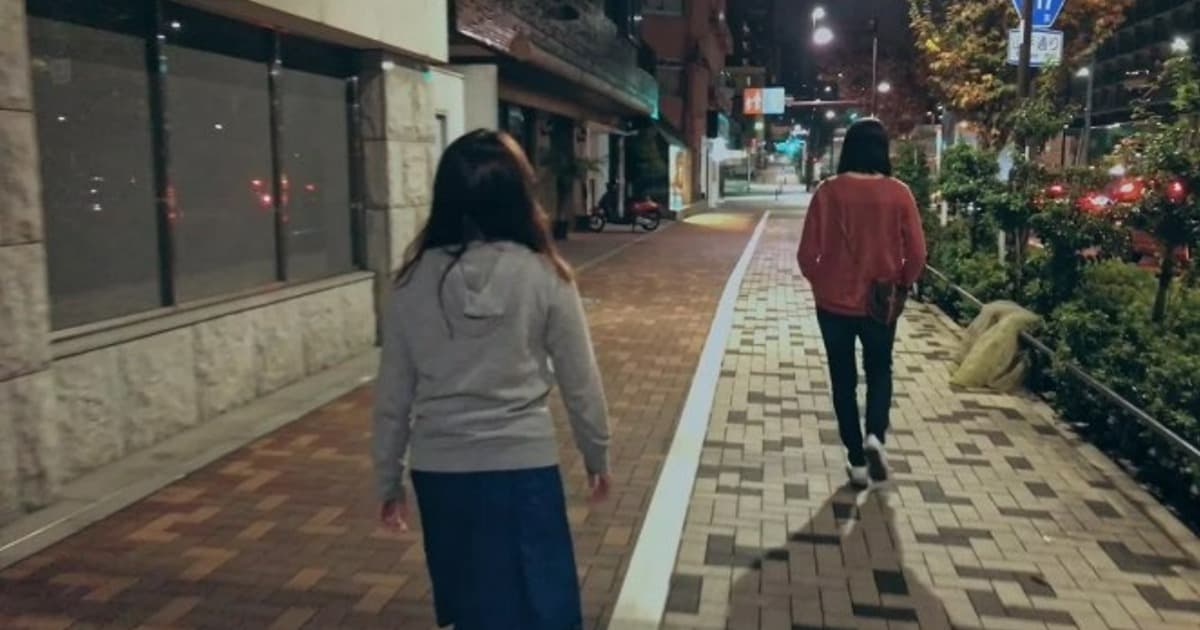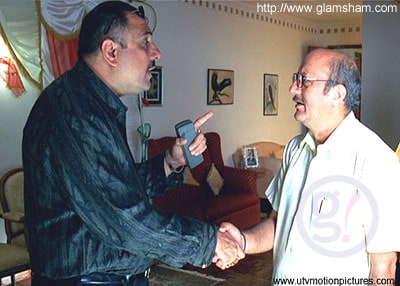“These are my friends. And this is a tribute and a memoriam to them.”
The cinema of Filipino director Lav Diaz has always been about time, its essence as well as its way to define people and their surroundings. Considering the average length of one of his films varying between four to ten hours, Diaz has repeatedly abandoned what is commonly known as mainstream cinema and popular conceptions of what cinema is. For authors such as Sascha Westphal, for example, Diaz is a director in the same tradition as Andrei Tarkovsky or Béla Tarr, but then again, even the attempt of categorizing films like “Norte – The End of History” (2013) or “The Lullaby to the Sorrowful Mystery” (2016) with the label “slow cinema” does not really fit with the kind of work Diaz has delivered throughout his career.
“Season of the Devil ” is screening at the 27th Art Film Fest Kosice

In a nutshell, “slow cinema” is most likely associated with a film's running time, but defining time in Diaz' body of work leads to a much more complicated concept. While some might think the way his films treat the topic is similar to literature, this also does not quite fully represent the cultural implications of the term for the director's home country. As Westphal points out, Diaz has often mentioned time as being a concept leading as far back as to the era of colonialism, with the Spanish conquistadors as the first to understand time as something which must be used effectively. Following the saying of “time is money”, the concept became one of the most significant ways to exploit the Filipino population, as Westphal mentions. One of the readings of the lengthy running time of Diaz' works might, therefore, be as means to re-discover, to re-define time as something unique, independent of its colonialist implications.
Consequently, time is also one of the leading motifs of his film “Season of the Devil”. The era, in which the film is set, is the time of martial law in the Philippines from 1972 to 1981, under the administration of Ferdinand Marcos. Even though he originally wanted to make a gangster film set in this time, Diaz claims in an interview at the Berlin Film Festival 2018, he found himself writing song after song about the subject matter. Eventually, he decided to make a musical using the lyrics he had written over the course of weeks, “funeral marches” about his country, its people and the politics of that time.
Nevertheless, “Season of the Devil” is not only supposed to show a time and age long gone, but rather its repercussions for our times. Considering the situation of his home country nowadays, Diaz attempts to pose the question whether people have been able to learn the lessons time and history have to offer. “It's cinema's task to examine the past” is a statement “Season of the Devil”, as well as his other films, want to explore. By repeatedly showing the past, the obligatory long, almost static takes and the use of music the time of the film becomes the time of the viewer, Diaz says. In the end, maybe those lessons of the past will not be forgotten, or may be refreshed. Regarding the current regime of President Rodrigo Duterte, there are certainly many reasons why one should not neglect what the country's past has to offer, and how relevant it is to understand the present.

The year is 1979 and the regime of Chairman Narciso (Noel Sto. Domino) terrorizes the country and the movie's setting, the small village of Ginto. Protected by the current political regime, a group of soldiers led by an especially sadistic female officer (Hazel Orencio) has been torturing, kidnapping and killing various farmers and other citizens. Even though the village's elder (Bart Guingona) protests against the various violations of the law, he is threatened and silenced as the law is on the side of the soldiers who have been ridding the country of rebels and communists.
Although she has been warned by her superiors and her husband Hugo (Piolo Pascual) not to go there, Lorena (Shaina Magdayao) sets up a clinic in Ginto, far away from the city. While Hugo, a once inspired, liberal poet, suffers from being separated from his love, it does not take long for the military to take issue with the interfering young doctor, especially after she tries to help a widow (Pinky Amador), who lost both her husband and her son to the trigger-happy soldiers. After receiving no news from her, Hugo decides to make his way to the village, a journey which will take him directly to a heart of violence and darkness.

In one of the typical shots of the film, the violence takes place at a great distance from the lens of Larry Manda's camera, in this case the killing of a young man walking at the side of the road by two men on a motorcycle. Leaving the body with a warning about this being the fate of every rebel, Diaz has set the tone for his musical, which, despite his claims, is anything but the “rock opera” he claims it is. The action in the foreground is minimized, often repetitious along with the lyrics, and the real violence often happens in the distance or off-screen, accompanied by comments, laughs, or other kind of reactions from the characters. It is precisely the blend of a static shot, the a cappella songs and the idea of violence, making “Season of the Devil” a true challenge for any viewer.
With regards to the world and version of 1979 the film creates, one needs to have a look at one of the recurring songs and themes. Sung by Bituin Escalante, who appears as some kind of muse to Hugo, the song, like the others in the film, is reduced to the voice of the individual singer without the support of any instruments or change in scenery as one would imagine in a typical musical. As a result, the effect is not only memorable, but quite haunting with the vision of a world without light, melody, color and heart. With the additional repetition of this song and its images, it becomes something of a self-fulfilling prophecy, evident in the deterioration of the values of beauty, moral and decency characters like Hugo and Lorena stand for. With these ideals disintegrating, there is indeed no distinction anymore between right and wrong, heaven and earth or the city and the land, everything bears the mark of the devil.
Considering the vision of the devil, his henchmen and this particular version of hell, this image could not be any more apocalyptic, and frighteningly current. As the village elder warns of the leader being part fool and chameleon, the representation of the devil is one of the great trickster, a Janus-headed figure who cannot even face his opponent. Fittingly called Narciso, this is a figure craving the attention, bathing in the chaos before him and barking out every sentence like a rabid dog. For men like Narciso “truth” and “lie” have become interchangeable concepts, nothing is clear and everything is in chaos in the eyes of devils like him. Being equipped with the truth, pleading people to maintain a sense of clarity inevitably goes unheard, as characters such as the village elder must learn.

However, like the great scholar Faust in Johann Wolfgang von Goethe's timeless classic, no one can withstand the devil for too long. In the way characters like the village elder or the widow are treated, Diaz' script exposes a kind of mentality clinging to superstition, tradition and authority while unable to make up one's mind. With warnings about ignoring the obvious signs of the devil (Hugo) and not giving in to the “cult” of violence and cruelty (the village elder) going unheard, it does not come as a surprise that these characters, along with their ideas, go through the same kind of process of spiritual decay.
At last, there are the songs themselves. Diaz, who has written the songs, has created a kind of musical very fitting to his visual language. Even though the film uses the idea of themes of the individual characters or groups of people, the almost anti-melodic approach to singing emphasizes the hypnotic feeling of the films as a whole. Especially the “La La La”-chorus of the soldiers or the disturbing delivery of “Talampunay Blues” play with the idea of repetition, seduction of the masses, and oppression via a system of lies. Similar to the invoked ghosts the widow is talking about, these songs seem more like the cries of tortured souls, or the ridiculing chants of demons in the face of their victims. And with no one talking back to them, with truth suspended indefinitely, purgatory has made its way into the real world.
“Season of the Devil” is a haunting film, one whose vision of hell will disturb and challenge its viewers. As with the other works by Lav Diaz, if one engages in the experience, the images and sounds of the film, the inevitable conclusions are eye-opening and brutal in the face of politicians relying on people's ignorance of the truth. Being forgetful of the past will likely play right into the devil's hands.
Sources:
1) Ganjavie, Amir (2018) Interview: Lav Diaz: Season of the Devil (Ang Panahon ng Halimaw)
https://www.ioncinema.com/interviews/lav-diaz-season-of-the-devil, last accessed on: 05/22/2018
2) Cronk, Jordan (2018) Berlin Interview: Lav Diaz
https://www.filmcomment.com/blog/berlin-interview-lav-diaz/, last accessed on: 05/22/2018
3) Westphal, Sascha (2018) Lav Diaz: Zeit zum Sehen (Lav Diaz: Time to see)
https://www.epd-film.de/themen/lav-diaz-zeit-zum-sehen, last accessed on: 05/22/2018















